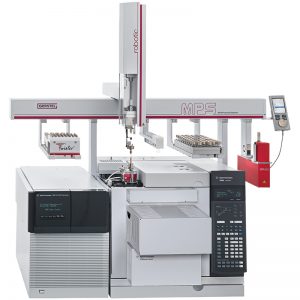The analysis of flavor compounds in beverages such as coffee, tea, soft drinks and alcoholic beverages usually requires cumbersome sample preparation steps such as liquid/liquid extraction, solid phase extraction or distillation techniques, often with the drawback of organic solvent use. Headspace and purge & trap methods do not use organic solvents, but their analyte range is restricted to volatile compounds and therefore characterize compounds that contribute to the aroma/smell of a sample, not flavor/taste. The sensitivity of solid phase microextraction (SPME) is limited by the small amount of sorptive material that can be coated on the fibers.
A new extraction technique, Stir Bar Sorptive Extraction (SBSE), recently described by Pat San dra et.al., that overcomes the major problems with classical extraction techniques is applied in this paper. With this technique, a small stir bar (10-20mm length, 1.3mm OD) is coated with polydimethylsiloxane (1mm d.f.), placed directly in the sample, and stirred for about 1 hour. During this time, analytes are extracted into the PDMS phase, which acts as an immobilized liquid phase. The stir bar is removed, rinsed with distilled water, and placed into a thermal desorption unit. Due to the hydrophobic character of PDMS, a drying step is not necessary. Heating the stir bar releases the extracted compounds into a GC-MS system for subsequent analysis with very low detection limits (parts per trillion).





